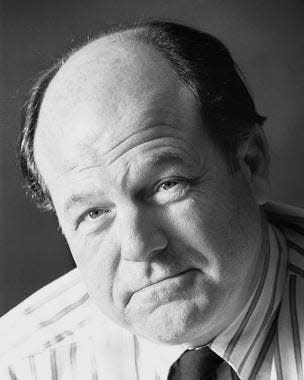The last Wyandot was one of the most memorable

Once upon a time, the people who were called Huron occupied much of the land from what is now Toledo south to Dublin and Columbus, to the place where the Scioto River met the Olentangy River.
Most of what is now the northern third of Ohio was reserved for Native Americans by the Treaty of Greenville of 1795. But over the next 25 years, largely through the efforts of William Henry Harrison, most of northern Ohio was bought or “otherwise convinced” and acquired by the United States.
By the 1820s, the only major Native American settlements in Ohio were a Shawnee reservation near Wapakoneta and a major Wyandot settlement around what is now Upper Sandusky.
By the 1840s, the reservations were gone. The last of the Wyandots were removed in 1843 by canalboat and then by steamboats to the West. With no reservations – federal, state or local – remaining, it would seem that Native Americans were gone from Ohio.
Not really. Even with the departure of the last Wyandots, some Native Americans remained in central Ohio.
One was named Kihue, who had been born near Upper Sandusky in 1837 but grew up and learned to hunt and fish with his family along the Scioto River near what is now Dublin. His family and a few related families either moved on or passed on, and only Kihue remained, making arrows and teaching woodcraft to anyone who had a desire to learn.
In 1878, he joined the locally owned Sells Brothers Circus and went on the road to several states and foreign countries as an “Indian rider.” After nine years with the Sells Brothers, he worked at other fairs and expositions and made the acquaintance of Buffalo Bill Cody at the Columbian Exposition in Chicago in 1893.
In 1915, Kihue, then 78, returned to central Ohio and took up residence in a ramshackle cabin near the intersection of High Street and Morse Road at Stop Eight on the interurban railroad line to Delaware and Marion.
He then was known by his anglicized name of Bill Moose.
In 1927, he told his story to a local journalist.
“I was born on Sept. 9, 1837, eight miles north of Upper Sandusky in Wyandot County about 200 yards west of where Col. (William) Crawford was burned at the stake by Delaware Indians and Simon Girty on June 11, 1782. I am a Wyandot Indian and the sole surviving full-blooded member of that tribe. My father died on Sept. 9, 1871, aged 100 years. My mother died on March 21, 1872, aged 106 years. Both are buried in the Indian cemetery of Upper Sandusky.
“During my father’s lifetime at Upper Sandusky, the Wyandot camp of Indians numbered about 400. Leatherlips, a friend of the white man, and a powerful and influential chief of that tribe, met his death on June 1, 1810, at a point about 12 miles north of Columbus on the Scioto River Road. Chief Pancake, who succeeded him, was the next and last chief of the Wyandots in this territory.
“Our tribe was of a religious nature and had their worship trees, under the branches of which they worshipped God, whom they called ‘the Great I am.’ They believed that good Indians would be rewarded in a future life and that bad ones would be punished. In 1816, our tribe was converted to Christianity by the Methodist Missionary John Stewart (the son of free African parents) who was sent to preach the gospel to them.
“The Wyandot and Delaware Indians sold their reservations in 1836. They were transferred to Kansas, later to Oklahoma where the tribe so intermarried that there are now no full-blooded Wyandots to be found there. Twelve families, including our own, refused to be moved and remained at their old campgrounds.
“For nine years I traveled with the Sells Bros. Circus and while with the show made a tour of the United States, Canada and Australia. I have never been married, am a Republican and cast my first vote for Abraham Lincoln. I attribute my long life to living close to nature and observe the custom of my tribe in sleeping out of doors during the summer, and one night of each month throughout the winter with only one blanket for cover. On my next birthday I will be 90 years old.”
Kihue died in 1937, two months before his 100th birthday. His funeral was attended by more than 10,000 people, and he is buried under a small pyramid of local stones on Wyandot Hill along the Scioto River.
His epitaph reads, “Bill Moose, last of the Wyandots born 1837, and whose death in 1937 marks the passing of the Indians from this territory.”
That is not completely accurate. Native Americans still are living in central Ohio. Yet Bill Moose was and remains one of the most memorable.
Local historian and author Ed Lentz writes the As It Were column for ThisWeek Community News and The Columbus Dispatch.
This article originally appeared on The Columbus Dispatch: The last Wyandot was one of the most memorable
